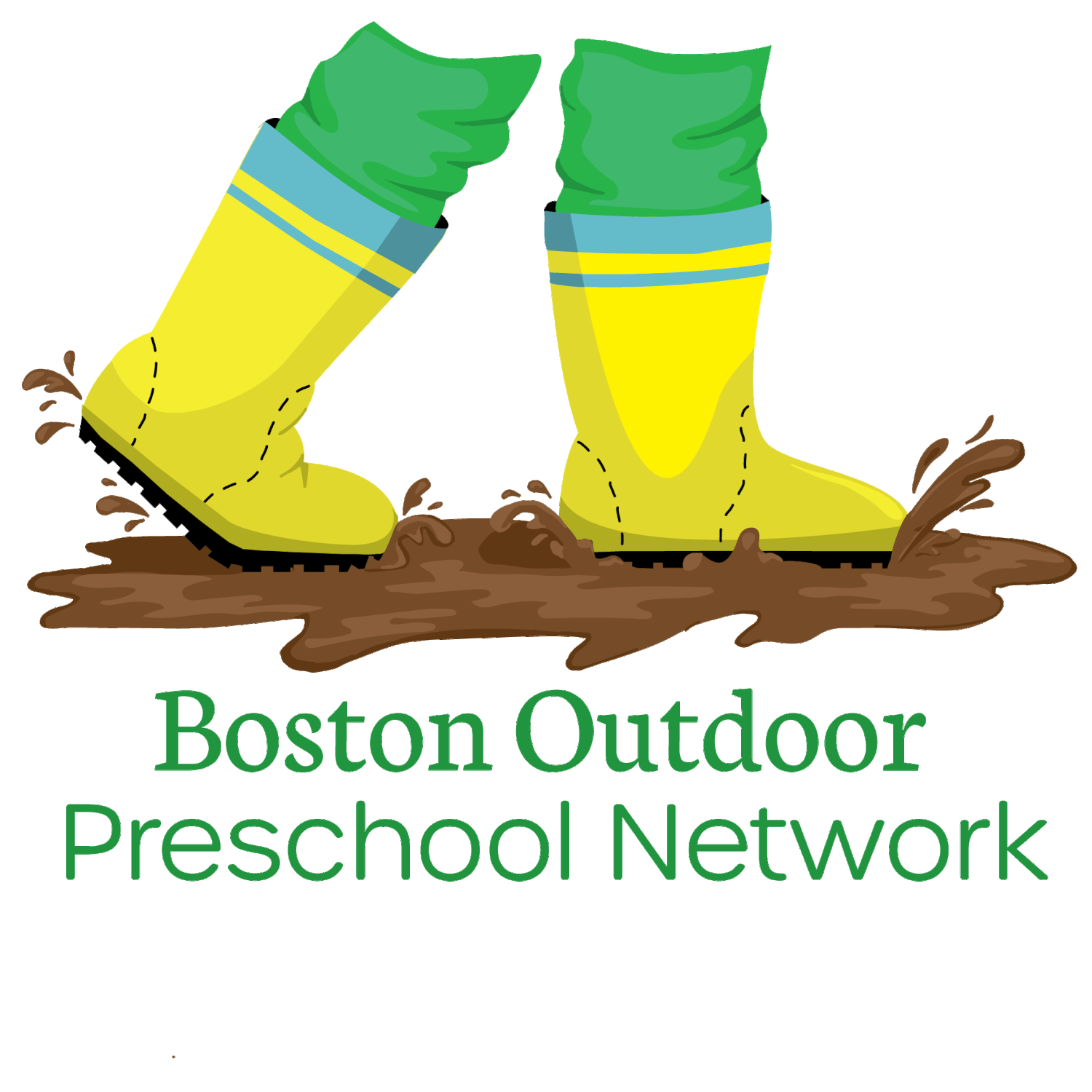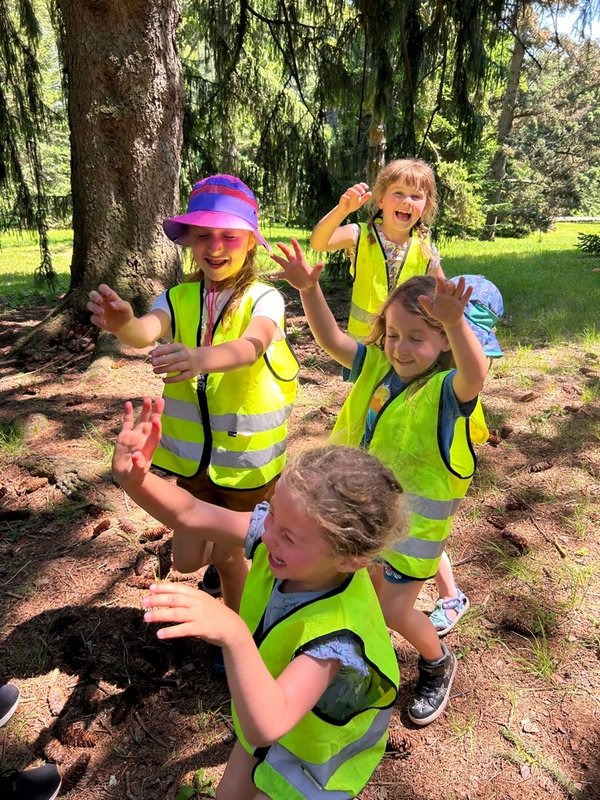Why Choose Mixed-Age Programs: Benefits of Learning & Play in an Age Diverse Classroom
By: Lylah Molnar, BOPN Programs Communication Coordinator (& Parent of BOPN child!)
In today’s day and age it is seldom that children are able to experience meaningful play with a diverse age range of children, yet this type of mixed age play has a rich and deep history. From hunter gatherers to the neighborhood play of the 1950s, 60s, and 70s, kids played with those they lived near, forming bonds with children of all ages.¹ Now, due to safety concerns and increasing time in highly structured school programs, most children don’t have access to the type of unstructured play of prior decades, when children were able to roam about freely with their neighborhood peers.
Studies have shown that taking a child to the local playground cannot replicate the independence and decision-making opportunities children are presented with when they are with a consistent group of peers.¹ BOPN’s philosophy of allowing uninterrupted play in mixed age settings under the guidance of trained educators affords a safe way to replicate the emotional and developmental benefits of ‘neighborhood play.’ This means our students are able to access that long history of mixed age groupings as the most magical backdrop for truly transformative play.²
My daughter’s BOPN summer class is comprised of children ages 2.9 years - 8 years and even has a 10 year old “counselor in training!” I couldn’t be happier with the ways that this composition of children has encouraged my daughter’s development and also served as a source of joy. When she comes home, I hear endless tales of the children and each one begins with the child’s name and age.
The age mixing is fascinating to my daughter, and she’s begun to explain different persons' capacities in light of their age. I see how my child is beginning to notice and understand the ways each of her classmates is unique largely due to her age-diverse cohort.
Socially, children who are enrolled in mixed-age programs have a deeper appreciation and understanding of individual differences, as these variances tend to generate interest, rather than to be viewed as a threat or something frightening.³ Children who may be rejected in age-segregated settings or are socially withdrawn in traditional environments often are able to find playmates in a mixed age classroom.³ Kids who are not par for par with their age-mates can usually find friends of similar abilities in an age diverse group.⁴
This too, I’ve noticed during my observations of BOPN classes. Especially in this post-covid age, there are many four year olds and older preschoolers who have had little to no socialization prior to joining the program and accordingly find it challenging to interact with other pre-k students. This past spring I noticed one child in particular who seemed to come into his own amongst the toddlers in our playgroup, gaining ever more confidence until he was able to interact, at first seriously, and later joyfully, in our drop off class with his same-aged peers. It was as if working from the youngest explorers up was his own way of scaffolding, giving him the confidence that he needed to recognize his own capacity for independence and engagement.³
Beyond the likelihood of finding a playmate, there are many other benefits of age mixing. Research shows how children learn skills across a wide variety of domains in mixed age play.² From traditional academic topics, such as literacy and numeracy, to socio-emotional skills and language development, playing together in a group of children across a wide range of ages, like children do at BOPN, provides ample invitation to learn and grow.²
As a parent, I am fascinated by the pictures I receive in the daily updates from my daughter’s teachers. From these, I am able to get a glimpse into the many ways the older children are modeling literacy skills for the younger ones in their class. Every week I see photos of labels for stores, signs for fairy houses, & other meaningful text, written by the five, six, and seven year olds in the class. These labels seem to be increasing with the passage of time as the younger children strive to imitate the literacy skills of the older children.
In a mixed age setting, children are often “assigned” tasks of increasing difficulty and meaning to the group, which provides a sense of cohesion and purpose for the youngest learners.² Children in such settings take more initiative to determine the activities they will engage in, as well as greater enterprise to solve their own problems as they arise, than in same aged settings.¹
There is one memory I will never forget from my time teaching in our full day program, as I’d never before witnessed such leadership skills in a 6 year old. The oldest child in my group wanted to build a fort. But this wasn’t just going to be any fort. This fort would be huge, enormous. He wanted to move the collosal branches that had fallen to become the base of the structure. Of course, he couldn’t do this on his own. First, he called the five year olds over. They too couldn’t move the branch, try as they may. The six year old called each child in the class by name, assigning them tasks catered to their own age and capacity. Then, to my astonishment, with lumbered steps, the branch inched its way across dirt hills. Crawl...pant...crawl ..pant. The heavy breaths of the youth evidenced their determination and strength. The kindergartner’s leadership continued as he provided pointed instructions to the group, guiding them through the diverse terrain. Though the class encountered many difficulties, eventually they succeeded in building their fort. The pride of all the children in completing a task led and chosen by kids was deep and genuine.
At its heart, BOPN is a play-based program. How does the age range of our students impact the children’s play? In same-aged interactions, children tend to be more serious and competitive; whereas in mixed age groupings, the play is more light-hearted and truly playful.² In other words, rather than trying to win, the children simply enjoy themselves and one another’s company.⁴ (What fun is “winning” against a child much smaller than yourself?) This lighthearted spirit invites children to be creative with the “rules” of the games they create and to try out new versions of play..⁴
I recently observed this principle in action when a six year old BOPN student taught a four year old how to turn a fallen branch into a “trampoline.” Together, they bounced and bounced. The giggling and smiling of the pair caught the attention of a three year old. Hopping off, the six year old allowed the four year old to teach the three year old how to enjoy nature’s playground. This process was repeated when the three year old welcomed a two year old who had been silently watching the exchange and was now ready to ride! Before long, the group had enough confidence with their balance to welcome all four children at the same time. Pausing only to allow newcomers a chance at bat, the kids animated action continued for 90 minutes of laughter, merriment, and glee!
Another benefit of age mixing for preschool students is the depth of social interaction therein. When placed only with children their own age, toddlers and young preschoolers play side by side, engaging in “parallel play,” rather than interacting with one another..² On the contrary, when younger children are placed amongst older children, the older children often model social play, provide props and vocabulary for their younger counterparts, and include the younger children in group activities, thus making it possible for these tots to immerse themselves in truly cooperative play..² The older children benefit from the mixed age grouping as well, as they learn to be compassionate, nurturing teachers..²
This research came to life when I stopped by our summer class busily engaged in the forest. The oldest children (ages six - eight) looked around, eyeing their surroundings and mapping out a plan while the four and five year old’s collected sticks. As they laid the bundle at the feet of the older kids, the elders chimed in with an explanation, “See all these pointy things up here? This one will do good!" The youngest child in the class, a girl of two years, who had been silently observing and mimicking in parallel play with phone-sized sticks, was then invited in for a chance to assist with one of the largest branches. The pride she felt when complimented by the oldest child in the group was evident by her beaming smile and feet dashing to bring even her little sticks to the group fort.
As a parent of a child who, during her time at BOPN, has been both the youngest, middle, and oldest in her class, I can speak with certainty when I attest that our mixed age programming benefits all of our students, regardless of what end of the class age spectrum they may be on. As a toddler, my child’s play and social skills were far above average, attributed largely to the guidance and direction of the older girls in her class who took her under their wings. As the middle child in her group, she delighted in the comparison and contrast of the older and younger children, bouncing back and forth between both groups, while finding her closest buddies in her age range. As the oldest kid in the class, I loved hearing how she would guide the play, inviting others into her stories, songs, and imagination. Never once did I feel that she needed anything other than exactly what she had.
I’ve personally witnessed how mixed age classes provide the fodder for a child-led education. These classes set the stage for academic learning as children set up imaginary shops, for social engagement, as children learn compassion & understanding, and, most importantly, for deep, joyful play, as children of all ages laugh together and develop authentic connections.
Bibliography:
Gray, Peter, et al. Decline in Independent Activity as a Cause of Decline in Children’s Mental Well-Being: Summary of the Evidence, Aug. 2023, www.petergray.org/_files/ugd/b4b4f9_f2cb98d004af4ebf9644c8daa30b040e.pdf?utm_source=substack&utm_medium=email.
Gray, Peter. “#10. The Special Value of Age-Mixed Play I: How Age Ming Promotes Learning.” #10. The Special Value of Age-Mixed Play I: How Age Mixing Promotes Learning, 20 June 2023, petergray.substack.com/p/10-the-special-value-of-age-mixed?utm_campaign=post&fbclid=IwAR023xUmSukjzIJVsjtwJFIFeztpZfziAQ91R5c3Opy4YsIdaqOnYXfTAnA.
Gray, Peter. “#11. Age-Mixed Play II: Its Benefits for Social Development.” #11. Age-Mixed Play II: Its Benefits for Social Development, 27 June 2023, petergray.substack.com/p/11-age-mixed-play-ii-its-benefits?utm_source=post-email-title&publication_id=1304855&post_id=131270105&isFreemail=true&utm_medium=email.
Gray, Peter. “#12. Age-Mixed Play III: Play Is More Playful When It Is Age-Mixed.” #12. Age-Mixed Play III: Play Is More Playful When It Is Age-Mixed, 4 July 2023, petergray.substack.com/p/12-age-mixed-play-iii-play-is-more?utm_source=post-email-title&publication_id=1304855&post_id=132887793&isFreemail=true&utm_medium=email.








